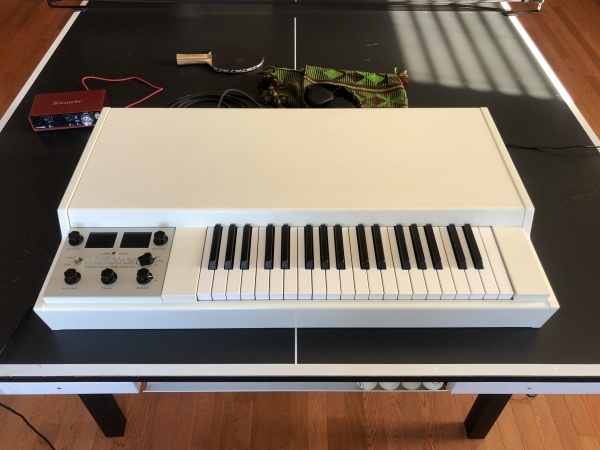BRATTLEBORO — What exactly is a Mellotron?
According to a 2005 article from Today's Engineer by Kim Breitfelder, the electromechanical musical keyboard instrument was based on a 1946 invention by American inventor Henry Chamberlain.
“Outside, it looked like an ordinary electronic organ. Inside, however, were 35 separate tape players, each equipped with a short loop of tape. Pressing a key caused a tape 'head' to touch the surface of the tape, causing whatever sound was recorded on that tape to be amplified and reproduced.”
“The Mellotron uses the same concept as a sampler, but the instrument generates its sound using analog samples recorded on audio tape rather than digital samples,” according to Wikipedia.
“Initially a certain musical instrument, say a flute, would be recorded one note at a time,” explains Goldstein. “You would press a key and get a flute's note. Press another way and you would get a different sound. You could find sounds of the whole orchestra from harp to strings and french horns. Lawrence Welk's orchestra was used for some of the original beats.”
The Mellotron became very popular in rock and roll music in the 1960s, with “Strawberry Fields Forever” by The Beatles and “She's a Rainbow” by The Rolling Stones as two notable examples of recordings featuring the instrument.
“In the '70s, it was everywhere,” Goldstein says. “The Mellotron became a key instrument in progressive rock.”
But the original Mellotrons were notoriously difficult to move, effectively prohibiting bands from touring with it.
And according to Breitfelder, “the Mellotron's complex mechanical tape players were also the source of great frustration. The wheels and rollers driving the tape rack had to be regularly adjusted to prevent the tape speed from becoming erratic. Further, misalignment between the tape heads and the tapes was common, leading to poor-quality sound.”
It is, Breitfelder writes, “one of the most loved - and hated - musical instruments of all time.”
Consequently, the instrument went out of fashion in the late 1970s and was used only as a novelty.
Then, a few years ago, the Mellotron made a comeback as a completely digitized instrument.
“Now music is accessed not by tape but digital files,” Goldstein said. “Ten or 15 years ago, a manufacturer purchased the rights to use the name 'Mellotron.' He went back to the first-generation recordings to digitize them, reproducing the sounds of the original Mellotrons, warts and all.”
The fact is Mellotrons never reproduced musical instruments exactly the way they originally sounded. Wikipedia points out that replaying a tape creates “minor fluctuations in pitch (wow and flutter) and amplitude, so a note sounds slightly different each time it is played.”
But this limitation is actually what made the Mellotron unique.
“Mellotrons became known for their eerie detached sound,” says Goldstein. “The ghostly effect of it sounds mysterious, as if music were removed from moments in time.”
“Within its restriction, my challenge was what I could make with these sounds, and then share with others what I have discovered,” he notes.
